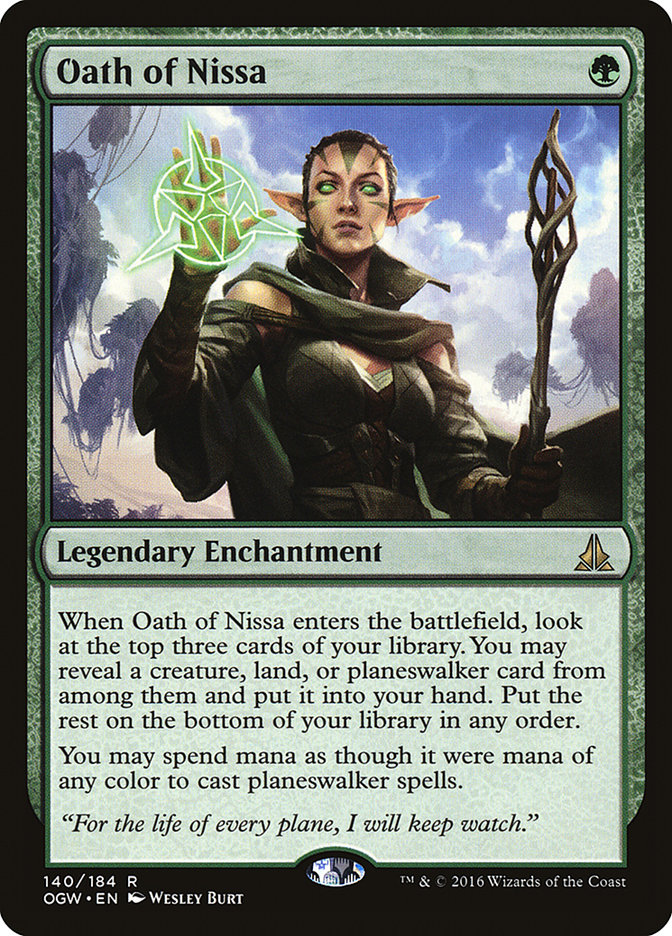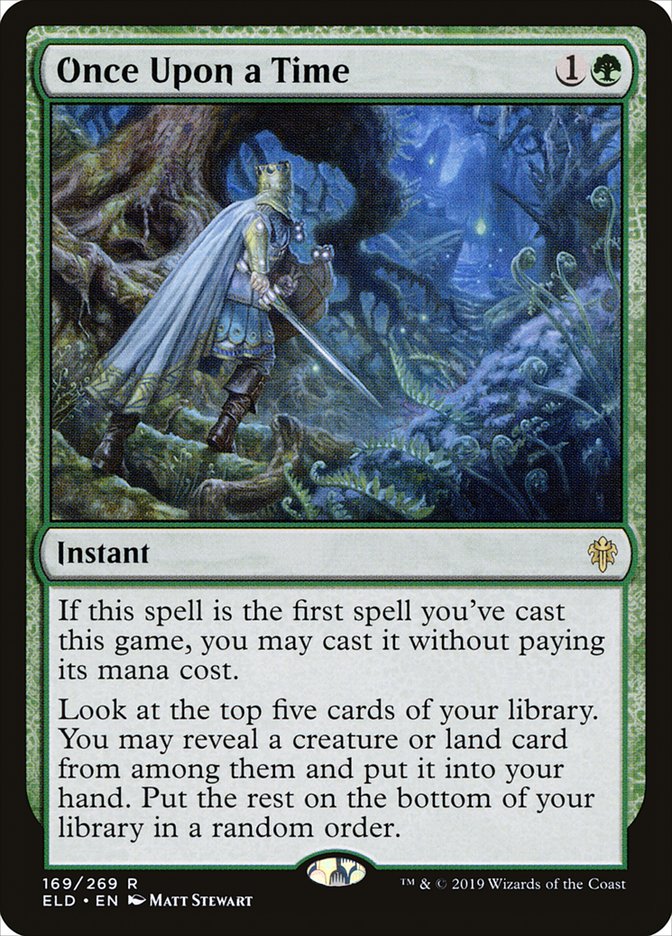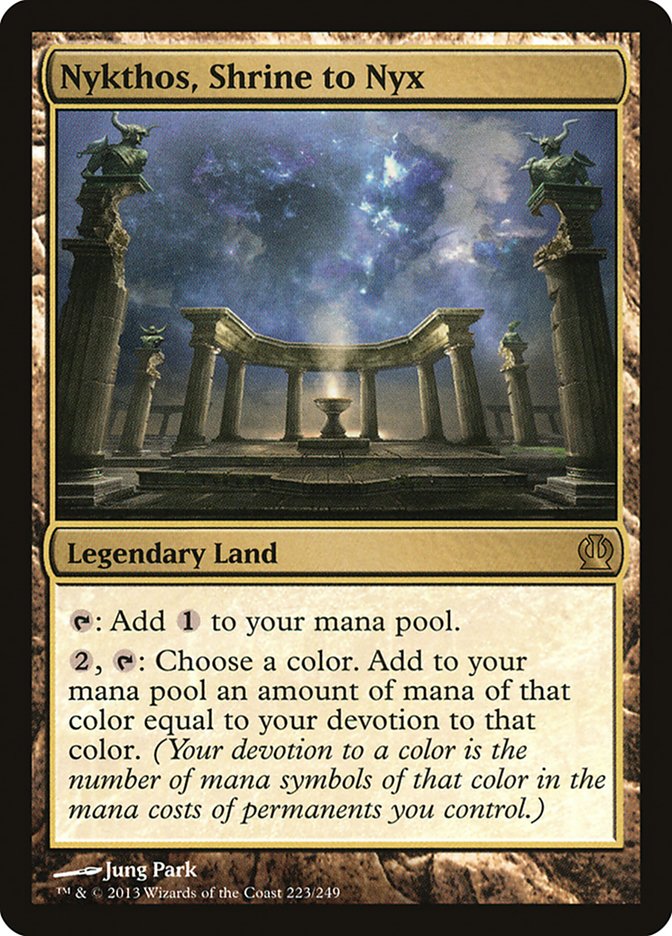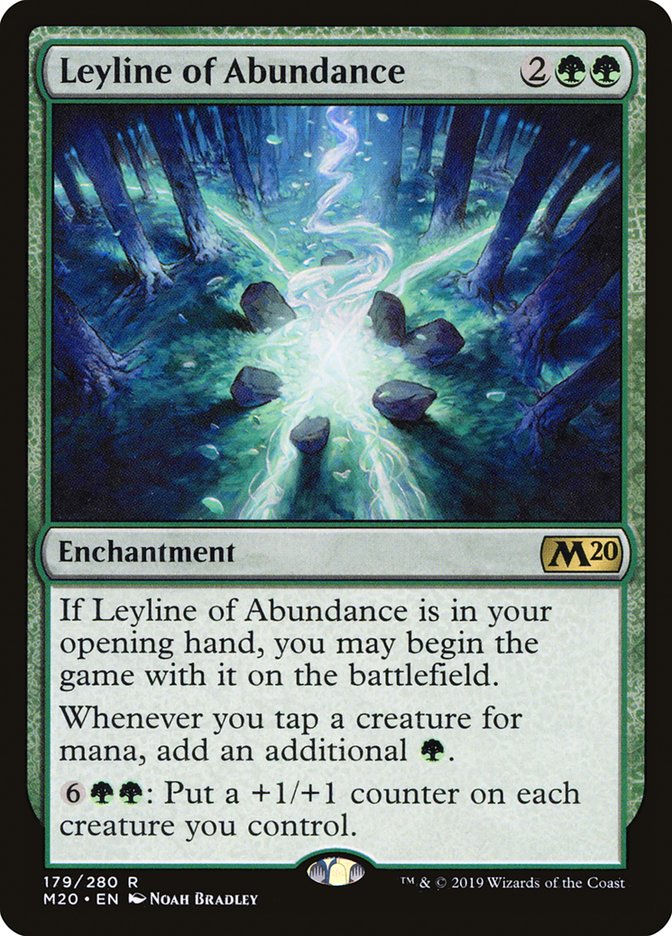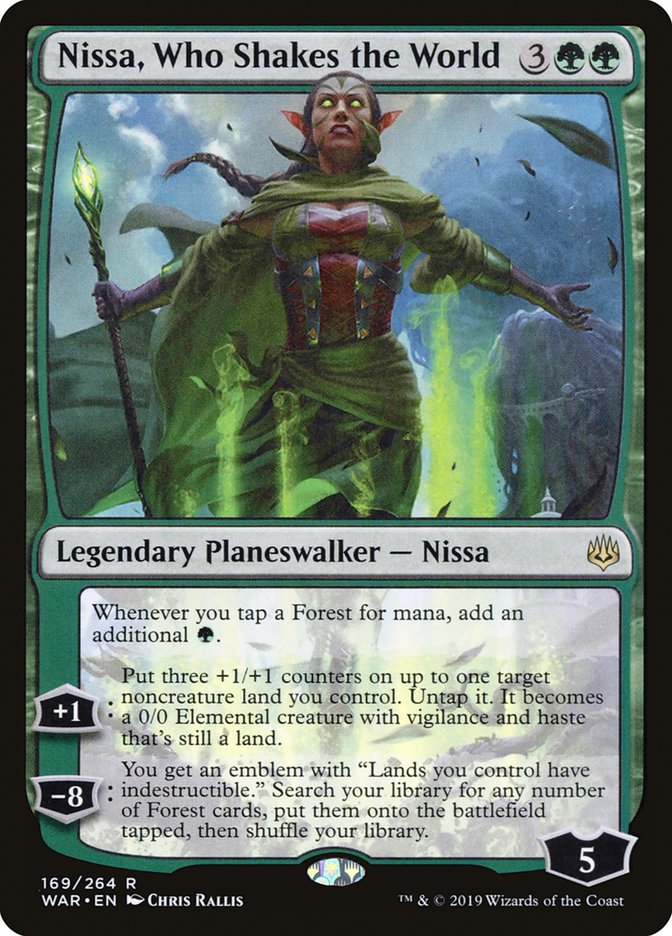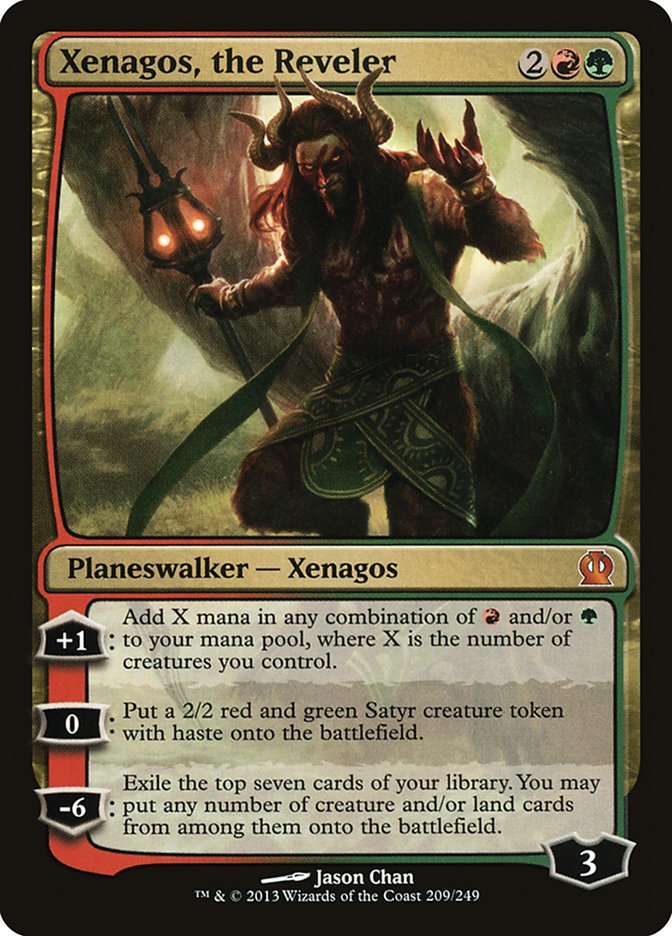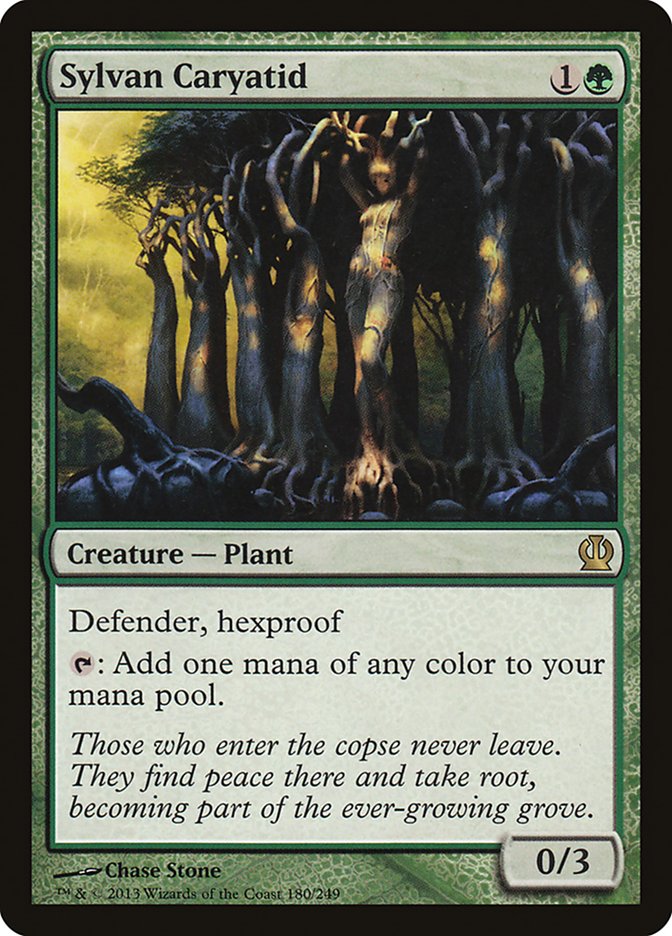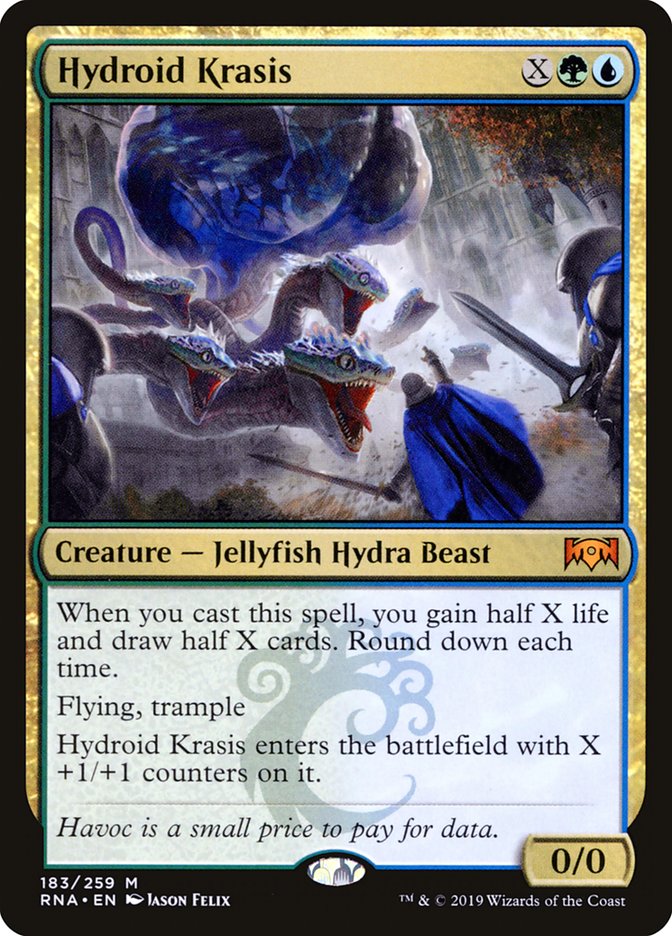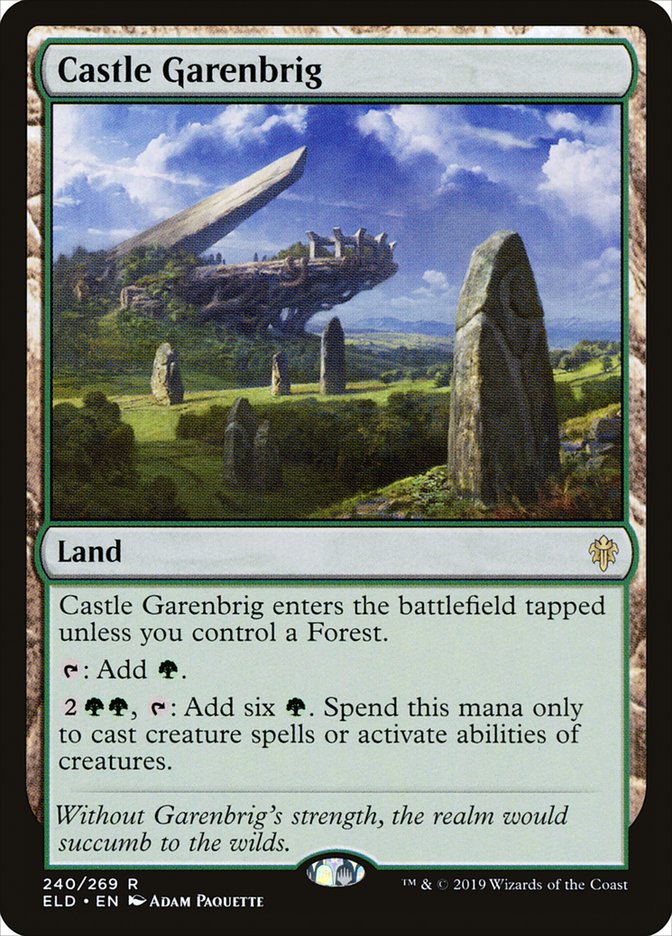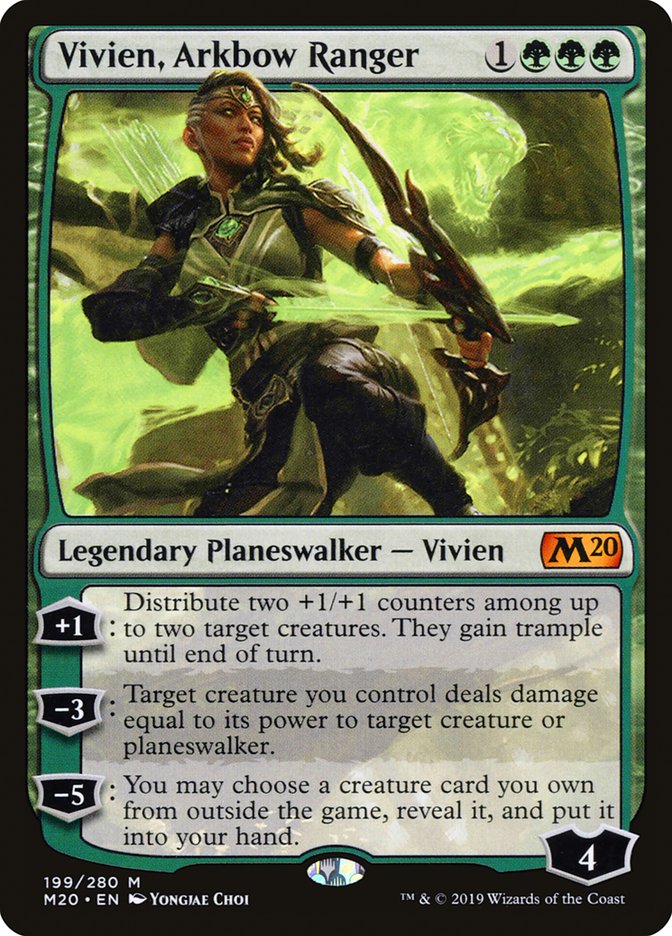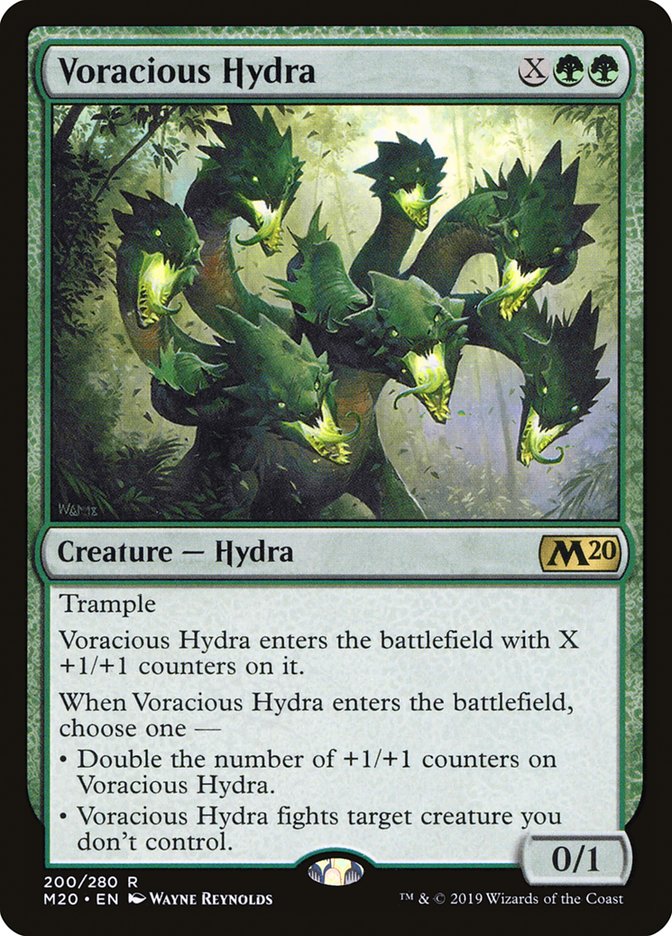Mono-Green Devotion decks were one of my favorite archetypes in Theros Standard. In fact, most Mono-Green decks are right up my alley. I’ve always loved a good Llanowar Elves, and luckily for me, Pioneer seems to have a Mono-Green deck that looks and feels unreasonably powerful and consistent.
Generally speaking, playing this style of deck usually means you’re sacrificing some amount of power for consistency, and drawing too many of your payoff cards or too many of your ramp cards leads to lopsided games because you didn’t really get to play Magic. Well, I’ve got some news for you: this iteration of Green Devotion doesn’t have those problems. Let me explain why.
For starters, we have eight ways to dig through our deck looking for either creatures or lands, depending on what we need most. These spells give us the consistency we need to hit our payoffs while also acting as a way for us to cheat on lands. They’re also excellent ways for helping us find Nykthos, Shrine to Nyx.
I can’t stress how good both cards are in our strategy. While neither will always find what you need, both Once Upon a Time and Oath of Nissa are great ways to fill your curve as the game progresses. They also help ensure you don’t flood in the late-game or get mana screwed in the early turns. Oath of Nissa even helps turn on devotion for Nykthos!
If you’ve played Throne of Eldraine Standard in the last month and change, you should already know just how good Once Upon a Time is. It only gets better when your deck is mostly creatures, but it goes into hyperdrive when you have powerful lands worth digging for too.
If you haven’t already, make sure to read Ross Merriam article on this card from Monday. He has a wide range of knowledge on the subject, as devotion-based decks were his forte all throughout their tenure in Theros Standard. Cards like Nykthos were the only reason to play random creatures or permanents with extra colored symbols in their casting cost. It defined an entire Standard format, even if it didn’t see a ton of play in some of the more consistent devotion decks.
Nykthos has cropped up on occasion in Modern before, but I think it’ll be even more prevalent in Pioneer, if only because a smaller card pool helps every powerful card shine that much more. And while Nykthos requires you to play a bunch of (perhaps) less-than-ideal card choices, the trick is figuring out the best ones at your disposal and letting Nykthos do all the heavy lifting.
Without Nykthos, I do think this deck would still exist, but it would be much less powerful. There’s a reason we’re playing four copies of a legendary land!
Leyline of Abundance is outrageous in this archetype, even if you don’t necessarily push it to the limit as far as playing a high number of creatures that generate mana. Eight virtual copies of Llanowar Elves mean you’re almost always starting with one on the first turn. If your opponent doesn’t kill it, you’re likely to have four or more mana on the second turn. And if you draw Nykthos, Leyline of Abundance helps supercharge it.
The greatest part of Leyline of Abundance isn’t the fact that it gives you a ton of extra mana, but how it also gives you a solid way to utilize that extra mana. Eight mana might seem like a lot to pump all your creatures, but a card that gives you both a burst of mana and ways to utilize that mana is, frankly, amazing. And you know what’s great for a deck with a bunch of small creatures that generate a bunch of mana? A way to pump all those creatures and turn them into real threats!
Oh, you’ve been loving playing with and against this card in Throne of Eldraine Standard? Well, have I got some news for you: it’s still absolutely disgusting in Pioneer! This deck can cast it as early as the second turn, which creates some absolutely monstrous battlefields before your opponent even has the chance to play their second land!
Nissa, Who Shakes the World is responsible for many game wins in this deck, giving you ludicrously large payoff cards while also providing you with a lot of bodies to apply pressure or defense against a wide range of opposing archetypes. With eight Llanowar Elves, it’s also very easy to cast on the third turn even if you don’t draw Nykthos, Shrine to Nyx.
Let’s go ahead and move into the different splashes for the archetype.
Diving Into the Different Flavors of Green Devotion
Mono-Green Devotion isn’t Mono-Green anymore! We’re able to splash multiple colors with ease, but the real question is whether those splashes are worthwhile. In this section, we’ll go over the splashes we have access to and what those colors have to offer. We’ll also figure out what holes those cards fill and how that relates to our overarching strategy. First up, let’s examine the red splash.
Creatures (21)
- 4 Llanowar Elves
- 4 Burning-Tree Emissary
- 4 Elvish Mystic
- 2 Courser of Kruphix
- 3 Dragonlord Atarka
- 4 Walking Ballista
Planeswalkers (7)
Lands (20)
Spells (12)
Sideboard

The red additions to the archetype give us a few more ways to interact with creatures that go wide in Dragonlord Atarka. As far as big payoffs go, you can do much worse than an 8/8 flying creature that sweeps up a few creatures from the opposing side of the battlefield. Oh, and luckily Dragonlord Atarka can also hit planeswalkers! Good thing it was made during a time when Wizards of the Coast was afraid of planeswalkers being too dominant!
Dragonlord Atarka does suffer from a lack of useful text on an empty battlefield. While it is an 8/8 flyer, that isn’t always good enough to get the job done if it isn’t actually killing stuff. The biggest draw for playing red is the other red card that is secretly one of the best cards in the deck:
Xenagos, the Reveler is phenomenal in this archetype because it’s one of the few cheap(ish) permanents you can play that isn’t vulnerable to a sweeper effect. It provides you with a lot of bodies to attack the opponent’s planeswalkers or life total, while also providing you with bursts of extra mana when you’re ahead. Making a large Walking Ballista is fantastic, but the games where you’re struggling in the middle because of sweeper effects are the ones where you really want a Xenagos at your side.
While it may seem preposterous, I’ve been considering cutting Dragonlord Atarka from this list just to play maindeck Voracious Hydra. As I’ll talk about later in greater detail, Voracious Hydra has been phenomenal for me, beating out Polukranos, World Eater in the “interactive” slot, though I’m still not sure if it’s better or worse than Walking Ballista. Regardless, my point is that Xenagos might be reason enough to play a second color.
This version is better against midrange decks, as both Xenagos and Dragonlord Atarka are great at blowing up opposing planeswalkers and creatures. They have enters-the-battlefield effects that proactively interact with your opponent’s battlefield, or push you pretty far ahead on an empty one. If you plan on facing down a ton of stuff like Sultai Midrange, this is the right version for you.
Moving on, we have a decent-looking Simic version.
Creatures (24)
- 4 Llanowar Elves
- 4 Burning-Tree Emissary
- 4 Elvish Mystic
- 2 Sylvan Caryatid
- 2 Courser of Kruphix
- 4 Hydroid Krasis
- 4 Voracious Hydra
Planeswalkers (4)
Lands (20)
Spells (12)

Since it’s slightly harder to make blue mana than red mana, we’re conceding the need for two copies of Sylvan Caryatid in the maindeck. I don’t love the card in this archetype because it doesn’t really benefit from the mana sink of Leyline of Abundance pumping it, but it does a very specific job, and that job is splashing blue.
Don’t bother splashing any other cards. Don’t bother playing counterspells in the sideboard. They’re not worth it. I might be forgetting a permanent or two that might be worth splashing, but I certainly haven’t found one yet. Hydroid Krasis is all the splash you need, and it’s unbelievable when you start popping off with your mana.
One downside to most of the permanents you’re casting with all that mana is that you’re usually vulnerable to sweeper effects taking all the wind out of your sails. But with Hydroid Krasis, you’re never really that afraid to dump all your mana into it and hope for the best. Even if your Hydroid Krasis dies, or all your other creatures too, the burst of cards you get from Hydroid Krasis usually means you’re going to have a great turn after you get all your stuff blown up.
I have yet to find a card better than Hydroid Krasis as a payoff, and I doubt you’re going to find one in Pioneer. It’s also an “X” spell, which means you can cast it at many different points in the game for medium value. Many payoffs for a deck like this get stuck in your hand, but the trick is having ones that give you some breathing room in the middle of the game too. If your deck is choc- full of cards like Ulamog, the Ceaseless Hunger, it becomes significantly harder to make it to the point in the game where these cards are worthwhile. That’s why these “X” creature spells are ideal, and boy do we have plenty to choose from.
If the format is control-heavy, this iteration is much better against stuff like Supreme Verdict. I highly recommend it.
Last up, let’s check out Old Faithful!
Creatures (22)
- 4 Llanowar Elves
- 4 Burning-Tree Emissary
- 4 Elvish Mystic
- 2 Courser of Kruphix
- 4 Walking Ballista
- 4 Voracious Hydra
Planeswalkers (6)
Lands (20)
Spells (12)

Splashing no colors means more Forests, which means fewer lands entering the battlefield tapped. It also means never drawing a spell that you can’t cast due to color considerations, which happens quite often when you only have eight or ten sources of your splash color. The strength of this version is that you don’t falter in tough spots, making you better against aggressive strategies, even without the burst of lifegain from Hydroid Krasis.
If you’re splashing another color, that usually means you don’t have enough actual Forests for Castle Garenbrig to consistently enter the battlefield untapped. And while we aren’t casting anything ludicrous like Primeval Titan a turn earlier, that extra mana can sometimes mean all the difference when it comes to casting a larger Walking Ballista or getting to your Ulamog, the Ceaseless Hunger a turn earlier!
While it does provide triple green for Nykthos, the actual strength of Vivien, Arkbow Ranger is a hedge of playing an Ulamog, the Ceaseless Hunger that isn’t actually an Ulamog, the Ceaseless Hunger. It can provide you with some slightly larger blockers or attackers for a turn and then be cashed in for Biogenic Ooze or Mistcutter Hydra in a pinch! When it comes to finding payoffs for big mana, finding cards that can work in either the mid-game or late-game is key. Vivien gives you some flexibility.
The real reason to stay mono-green, Voracious Hydra is just an absurd Magic card and should likely be in all three of these lists as a four-of in the maindeck. I still don’t know for sure that it’s better or worse than Walking Ballista, but I’ve cast it dozens of times now, and making a giant threat is occasionally just what the doctor orders. And if you have an active Nykthos, the extra green devotion just for making a four-mana 4/5 is great.
Voracious Hydra is also one of the easiest ways to pick off an opponent who deploys some early creature that threatens to take over the game. Cards like Jace, Vryn’s Prodigy or Thing in the Ice are often really strong against this monocolored style of deck because green doesn’t give you the right tools to interact with them. But Voracious Hydra throws that for a loop.
While I’m still not sure which of these three iterations of is the best for the current Pioneer format, I do know that all three have felt incredibly powerful and much more consistent than expected. Nykthos and Burning-Tree Emissary give you some explosive starts that many decks just aren’t equipped to handle. Even if your opponent has a few removal spells for your early mana creatures, that isn’t always enough to slow you down all the way. What are they gonna do? Kill all your creatures? Eventually, something has to stick!
My next experiment in this archetype is trying out cards that provide you with bursts of advantage in the mid-game but help take over as the game progresses. I don’t want to be hyper-aggressive with stuff like Steel Leaf Champion, but I wouldn’t mind going hard on Biogenic Ooze! Our deck is quite adept at going wide, which means creatures like Steel Leaf Champion just don’t fit the overarching strategy.
So far, Pioneer has been a ton of fun. It feels like just about every powerful deck from the last seven years of Standard is viable, complete with a few upgrades! And while there will almost certainly be some cards banned soon, nothing feels overwhelmingly powerful. Without fetchlands, even stuff like Dig Through Time and Treasure Cruise seems great but not busted. Keep an eye on this column over the next few weeks, as I’ll be focusing on the Pioneer format almost exclusively!


